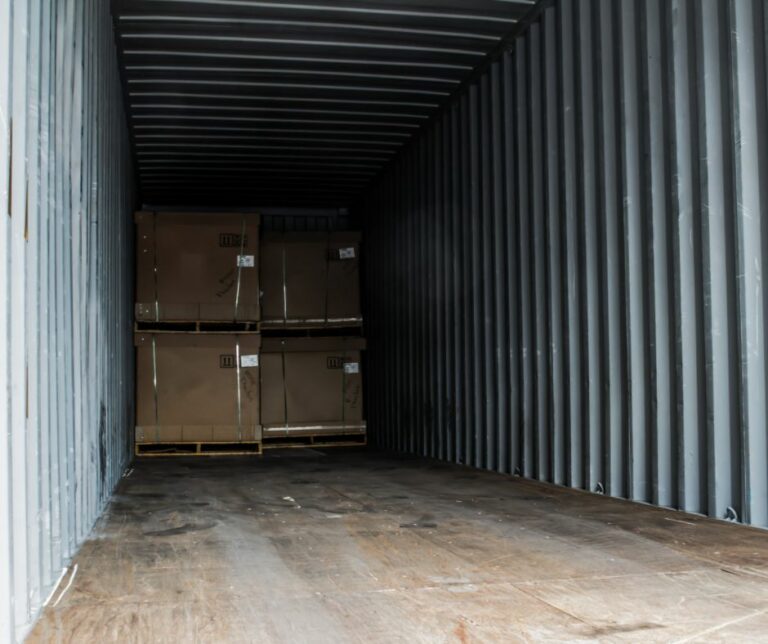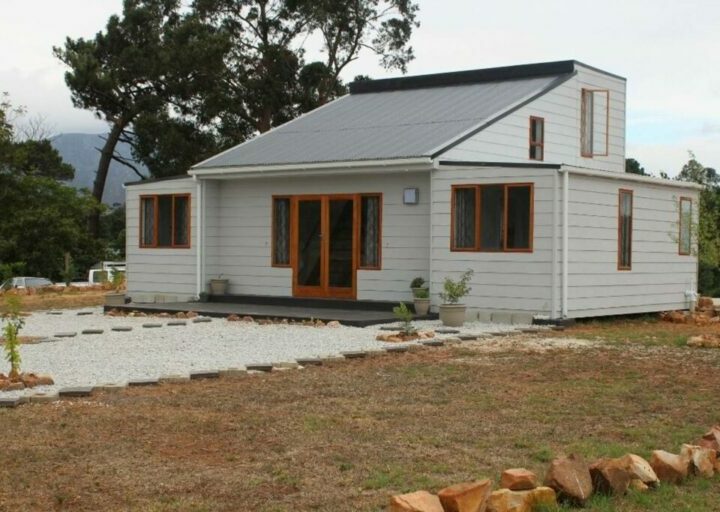Shipping containers have been around for over half of a century at this point. Even with this vast history, it’s only been in the past 20 years that people have come up with ways to use them as building materials for a wide variety of new constructions. From unique yoga retreats to Airbnb getaways to HGTV shows about shipping container homes worldwide, shipping containers are a new hot trend in home design that you need to check out.
But as is true for anything with history before it came to you, it’s important to know the history of your home to guarantee you can have a long future in a safe shipping container home. For example, did you know that shipping containers can sometimes be used to transport harmful chemicals overseas? There are a series of questions individual to metal building design and the shipping container construction process that you need to be prepared to ask and process to build a strong and secure shipping container home.
Read on to learn how to build a safe shipping container home, with the help of these three questions.

A safe shipping container home
If you’re already interested in the shipping container home trend, you are aware that the frame of a shipping container home most often comes from recycled shipping containers. Shipping containers were invented in the late 1950s to make international transportation of goods easier and more sustainable. However, by the early 2000s, many of these shipping containers had been abandoned in shipping harbors with no plans or ideas to recycle or break them down.
Shipping container homes were born out of the idea of recycling these shipping containers and repurposing them as home construction supplies while also offering individuals a safe, long-lasting alternative for weatherproof housing. But even with that goal in mind, it’s important to remember that shipping containers were not created as safe homes.
A safe shipping container home is made from these used shipping containers – with the help of an informed construction crew and lots of research on your end. Shipping containers are traditionally eight feet wide and have four potential length options – 12, 16, 20, and 40 feet. With this in mind, you can achieve the goal of a safe shipping container home by looking at safety from a few different angles:
- What building materials were used to create the original shipping container
- Whether the shipping is designed to withstand extreme weather
- How secure your shipping container home is before adding any home security systems
What building supplies are used in a safe shipping container home?

We already know that shipping container homes are great for the metal frame offered by the original shipping container. However, because shipping containers were not originally designed to be used as housing materials, it’s important to research what else could have been added to your shipping container when it was first built.
For example, many shipping containers used to be coated in chemical-based paints that are hazardous to humans. Phosphorescent paint is still used today on shipping containers to help make sure their number tags and company logos are glow-in-the-dark, no matter when and how they are being transported. But the phosphorus chemical in this paint is harmful to humans when inhaled and can cause bronchitis. Chromate paint is also used as an industrial coating to help make shipping containers more weatherproof, but its zinc base can cause humans to break out in a rash. The wooden floors installed in shipping containers have also usually been treated with pesticides to keep bugs and rodents out of products while they are being shipped.
To avoid these issues and guarantee the safety of your shipping container home, you need to know exactly what you’re dealing with. First, look up the identification number of your purchased shipping containers. Every used shipping container will have a distinct number attached to it that can help you track its history and design. Once you know what you have on your hands, you can work with a contractor to safely remove the paint or add an extra layer to your home that covers the original dangerous layer.
For hazardous floors, you can work around the chemical-treated wood on the base of your shipping container by adding an extra insulating layer called non-breathable underlayment between the original wood and whatever flooring materials you decide to use for your shipping container home.
What climate is a safe shipping container home built for?

Many people wonder whether shipping container homes are designed for extreme weather like blizzards, tornadoes, and hurricanes. Interestingly, the history of shipping container homes is based on the need for more durable housing after unexpected weather storms.
More than a mobile home or traditional wood-framed house design, a shipping container home is likely to handle harsh storms. Since their beginning, shipping containers have been made to be stacked on top of each other, with over 53,000 pounds in each container. Shipping containers can also withstand up to 170 miles per hour of wind force. So with that in mind, your home’s frame will be fine.
When it comes to unexpected weather patterns in the future of your home, you need to prepare for some damage. Usually, there is little you can do to avoid damage to windows, roofing, or added siding. But you can also work around this by adding hurricane-proof glass and shutters to your home and using metal building materials for the roof and siding of your shipping container home.
If you live in an area that is more likely to experience tornadoes instead of hurricanes, you might want to consider digging a basement for your shipping container home or adding a strong foundation under the metal frame of the original shipping container.
No matter what, it’s most important to ensure you purchase your original shipping container in good condition. This means you’re looking for one that doesn’t already have any rust damage or corrosion. You also need to plan to protect your home against future moisture damage. One of the easiest ways to do this is by avoiding cutting any new holes in your shipping container. Instead, reinforce entryways already installed in your shipping container with shatter-proof glass and galvanized steel frames.
You can also help protect your shipping container home against extreme heat by investing in the proper insulation and cooling systems needed for a productive metal building home construction. This can be done with the help of spray foam and heat-resistant roofing.
How can I secure a safe shipping container home?

Often, shipping container homes are created by people as secondary residences. As vacation homes, this can mean you won’t always be nearby to check on the safety of your shipping container home and the property where you’ve built it. This means you must especially pay attention to how safe your shipping container home will be against break-ins when you are away from it.
The good news is that shipping containers were originally designed to be secure. Their metal frame is meant to be airtight armor around goods as they are transported worldwide. Before shipping containers existed, one of the biggest issues with international trade was how often items were stolen by the crew that was charged with delivering them. When shipping containers arrived, companies suddenly had a way to secure their materials at the factory where they were made – and then they didn’t have to be opened until they arrived at their intended destination.
As a shipping container homeowner, you can maximize these qualities of a shipping container by making sure your windows and doors are built behind the original metal of the shipping container. This will help you save money because you won’t have to cut out holes in the shipping container to fit windows and doors. And it also means you can use the original shipping container doors to lock your home when you are away. As soon as you return to your shipping container home, you have to open these doors to access your residential space and enjoy the natural light that will come through your windows.
Conclusion
Now that you’ve read our guide to the safety of shipping container homes, the only thing left to do is start building your container home! Feel free to check out our shipping container home FAQs, including our tips on building a shipping container pool in 7 steps. Or read more about shipping container homes on our blog, where you’ll see content like this featured quaint and cozy shipping container home in Devine, Texas.


